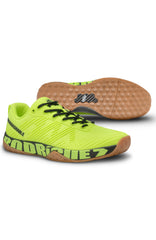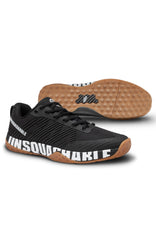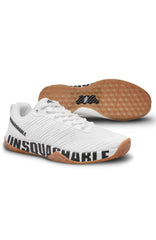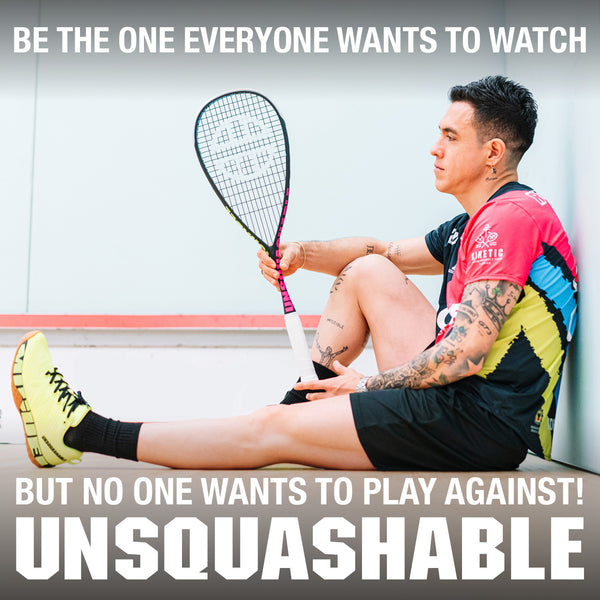Learn how to cool down properly after playing squash to recover faster & avoid injury
July 01 2019

Many people dismiss the cool down as a waste of time, or simply unimportant. In reality the cool down is just as important as the warm up, & if you want to stay injury free, it's vital.
Although the warmup & cool down are just as important as each other, they are important for very different reasons. While the main purpose of warming up is to prepare the body & mind for strenuous activity, cooling downplays a very different role.
Why Cool Down?
The main aim of the cool down is to promote recovery & return the body to a pre-exercise, or pre workout level. During any strenuous game (or workout), your body goes through a number of stressful processes. Muscle fibres, tendons & ligaments get damaged, & waste products build up within your body.
The cool down, performed properly, will assist your body in its repair process. One area the cool down will help with is relieving some of the effects of delayed-onset muscle soreness or DOMS (sometimes referred to as post exercise muscle soreness).
This is the soreness that is usually experienced the day after a tough game or workout. Most people experience this after having a lay-off from exercise, or at the beginning of their sports season. I remember running a half marathon with very little preparation & finding it difficult to walk down steps the next day because my quadriceps were so sore. That discomfort you feel is "delayed-onset muscle soreness."
This soreness is caused by several things. Firstly, during any strenuous exercise, tiny tears called micro tears develop within the muscle fibres. These micro tears cause swelling, which in turn puts pressure on the nerve endings & results in pain.
Secondly, when exercising, your heart pumps large amounts of blood to the working muscles. This blood carries oxygen & nutrients that the working muscles need. When the blood reaches the muscles the oxygen & nutrients are used up, then the force of the contracting (exercising) muscles pushes the blood back to your heart where it is re-oxygenated.
However, when the exercise stops, so does the force that pushes the blood back to your heart. This blood, as well as waste products like lactic acid, stays in the muscles, which in turn causes swelling & pain. This process is often referred to as "blood pooling."
So, the cool down helps all this by keeping the blood circulating, which in turn helps to prevent blood pooling & also removes waste products from the muscles. This circulating blood also brings with it the oxygen & nutrients needed by the muscles, tendons & ligaments for repair.
The Key Parts of an Effective Cool Down
Now we know what the cool down does & why it is so important, let’s have a look at the structure of an effective cool down. There are three key elements, or parts, which should be included to ensure an effective & complete cool down. They are:
Gentle exercise & movement;
Low-intensity, long-hold static stretching
Re-fuel
All three elements are equally important & any one part should not be neglected or thought of as not necessary. All three elements work together to repair & replenish the body after exercise.
Sample Cool Down Routine
To follow are a few guidelines to help you put together an effective cool down. The duration of the cool down will depend largely on your level of fitness & the time you have available. For example, a professional squash player athlete may spend up to an hour on their cool down, while a casual player the weekend warrior will get a great deal of benefit from a simple 5 to 10-minute cool down.
Gentle Exercise & Movement
Start off with some very gentle exercise or movement. Be sure that the easy exercise resembles or mimics the type of exercise that was done during your game or workout. For example, if your game involved a lot of running, cool down with easy jogging or walking & . include some deep breathing as part of your easy exercise to help oxygenate your body.
Low-Intensity, Long-Hold Static Stretching
Follow with some very gentle stretching exercises. Choose stretches that focus on the large muscle groups that were used during your game or workout. So, if you just spent the last hour running around a squash court, choose stretches that focus on the quadriceps & buttocks, & the chest & upper back.
Many people make the mistake of stretching too hard or too vigorously during this part of the cool down. Low-intensity, long-hold (30 to 60 seconds) static stretching is best at this point. The aim here is not necessarily to improve your flexibility; it’s to gently lengthen out those muscles that have been constantly contracting during your game.
Re-Fuel
This part of the cool down can be done as you perform the other two parts. Both fluid & food are important. Drink plenty of water, plus a good quality sports drink. The best type of food to eat straight after a game or workout is that which is easily digestible; fruit is a good example.
Getting serious about your cool down & following the above example will make sure you recover quicker from your workouts & stay injury free.
Brad Walker, Assoc. Dip. Health Science (Sport & Exercise) is a prominent Australian sports trainer with more than 25 years’ experience in the health & fitness industry. Brad graduated from the University of New England, & has postgraduate accreditations in athletics, swimming, & triathlon coaching. His newest book: The Anatomy of Sports Injuries: 2nd edition, published by Lotus Publishing is out now: www.lotuspublishing.co.uk







